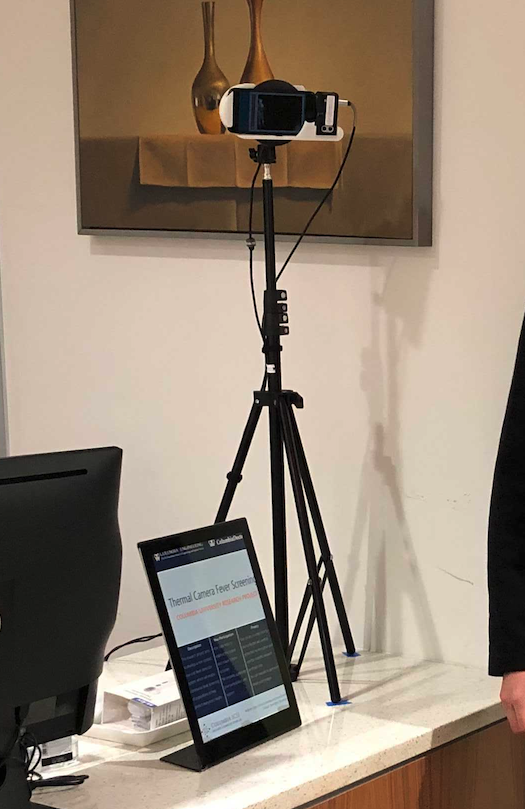A Low Cost In-situ Continous System
-Continous detect fever without any human intervention with only $300.
The pandemic, caused by the COVID-19, swept across the world as a devastating global public-health tragedy, as an estimated 5 million people died in 2 years. The demand for thermal monitoring system has rapidly increased while typical commercial thermal scanners are usually cost thousands of dollars.

Our system can obtain key temperature features of heads in-situ and produce fever screening predictions in real-time, significantly improving screening through-put while minimizing disruption to normal activities.
In addition, this system only needs to be deployed once and run forever, which can also help reduce the cost of labor. It continously meansures the temperature of people in the field of view of camera.
Measure Multiple People Simultaneously
To increase the through-put, the ability of measuring multiple people at the same time is another key factor.
We trained YOLOv3 using the South China University of Tech-nology (SCUT) head dataset as well as the custom RGB and thermal image dataset. The retrained YOLOv3 meets the requirements for accuracy and has low latency as well as mutiple detections at one single frame.

Accurate Measurement Result
We calibrate sensor reading and apply robust machine learning models to reduce the error.
To improve the accuracy, we calibrate sensors, detect the head orientaion to construct a 3D model and a robust regression model to approach the ground truth. Many thermal meters in market have a large error which is normally about 2 Fahrenheit. Even the top meters still have an error about 1 Fahrenheit.
The radiation energy measured by the sensoris not equivalent to the radiation energy given off by the measured surface. The first reason is the emissivity of the surface. Secondly, distance to the object is another important factor. We can estimate the 'true' temperature by removing these two factors.

We detect the orientaion (roll, pitch and yaw) of each head, and map the head to a 3D model with these orientation vectors. The purpose is that, the temperature at different locations on face are different.
Like an ear (tympanic) temperature is 0.5°F (0.3°C) to 1°F (0.6°C) higher than an oral temperature. People are not forced to face the camera directly since one of the system requirements is not to disrupt people's normal activities. The forehead could be at the center of a thermal head image or could also at the corner of a thermal head image. With the orientaion detected, we can tell where the forehead is in the iamge.
Besides constructing 3D model of heads, we also want to remove the effect of error from single points we use. Therefore we also aggregate multiple features on head to reduce the effect from single location.

A Dashboard for Each User
We develop a server for each customer using our system.
For a better view, we offer a Dashboard for the monitoring system. Entrance here: Dashboard
In the Dashboard you can see real time detection from your registered device(s).